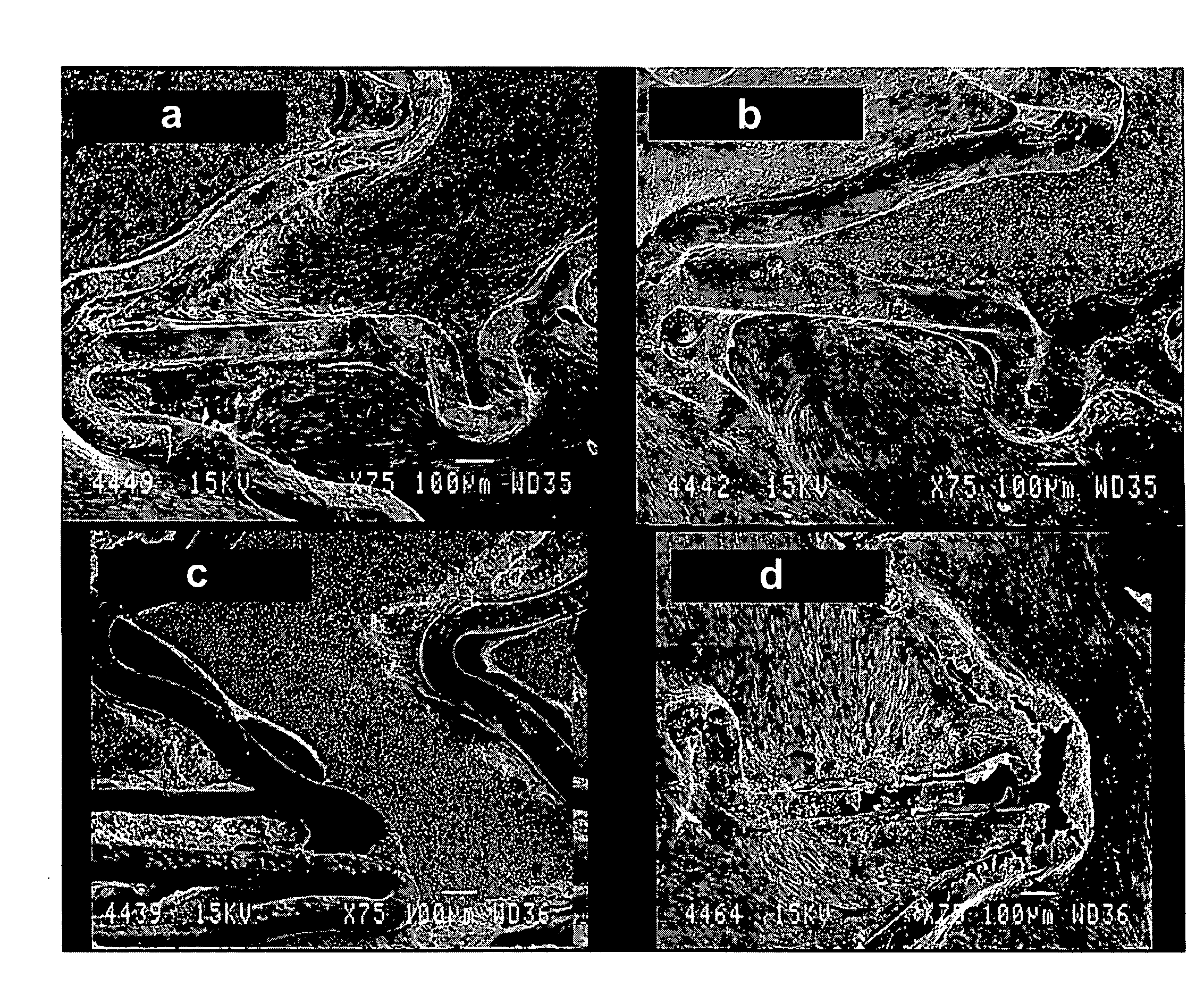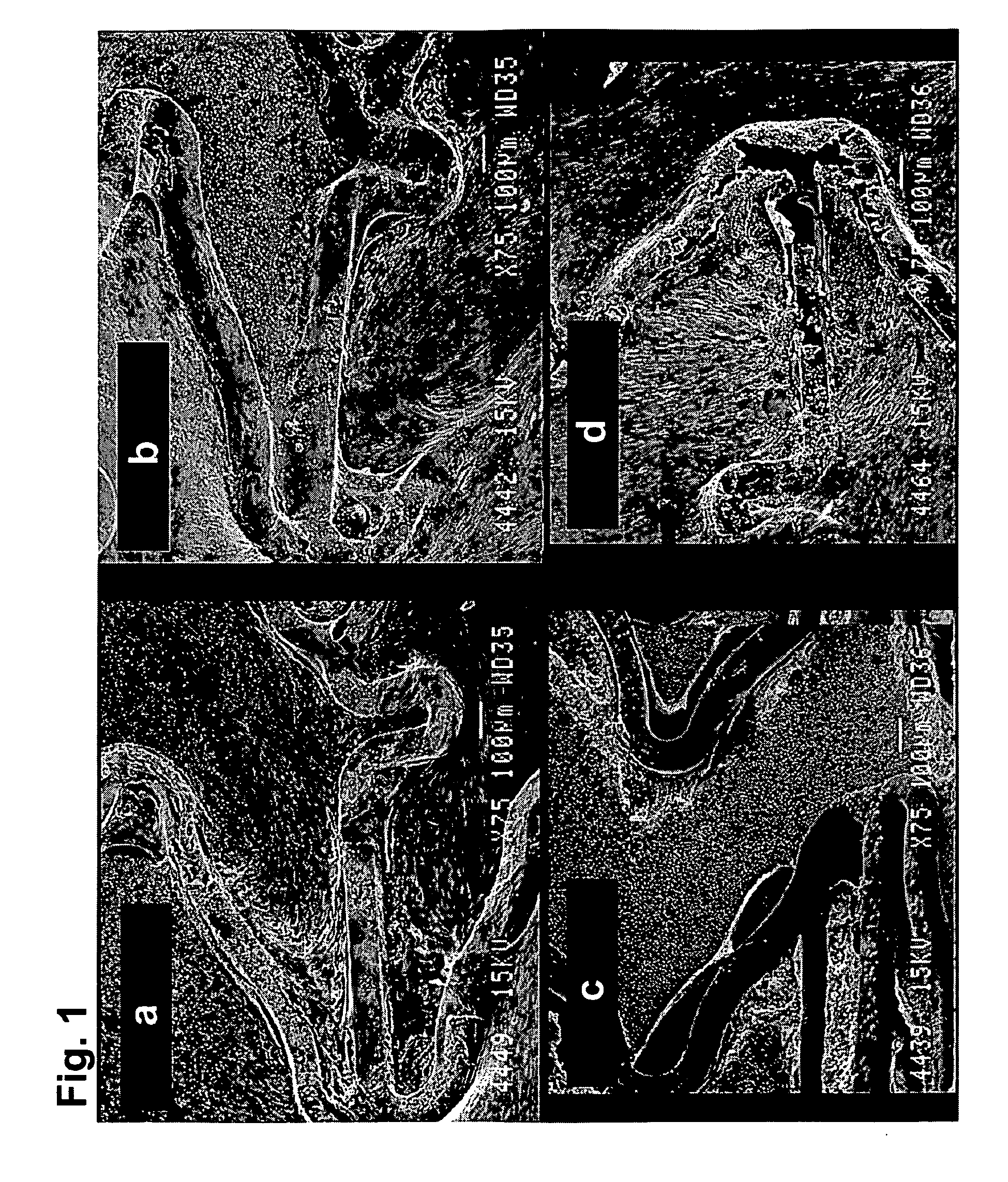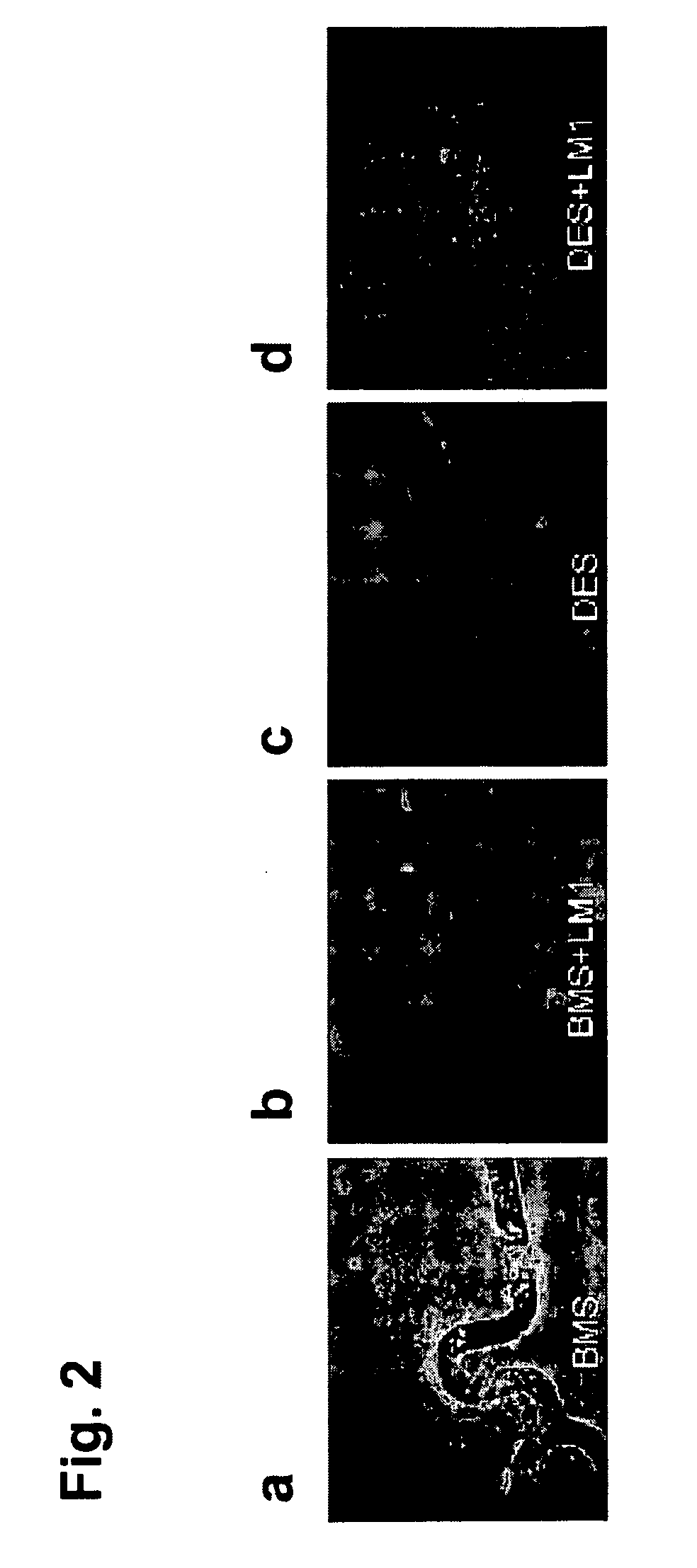Implantable medical articles having pro-healing coatings
a technology of medical articles and coatings, applied in the direction of prosthesis, antithrombosis treatment, blood vessels, etc., can solve the problems of excessive proliferation of ecs, device failure in vivo, inflammation, fibrosis, etc., and achieve the effect of improving the function of the articl
- Summary
- Abstract
- Description
- Claims
- Application Information
AI Technical Summary
Benefits of technology
Problems solved by technology
Method used
Image
Examples
example 1
[0129]HBPR / protein-modified (HBPR COLI / LM5, etc) coronary stents (3×8 mm) were evaluated for healing responses in the iliac arteries of New Zealand white rabbits. The coatings were formed on either 3×8 mm cobalt chromium bare metal stents or 3×8 mm cobalt chromium metal stents having a silane / Parylene™ base coat and a drug-eluting pBMA / pEVA / paclitaxel coat. The coatings are summarized in Table 1 below. Prior to protein or photo-protein coating, but following any silane / Parylene™ or pBMA / pEVA / paclitaxel coating the stents were EtO sterilized. Aseptic techniques were then used to apply the protein or photo-protein coatings.
[0130]For some stent samples, coatings were formed using photogroup-derivatized matrix proteins (photo-collagen and photo-laminin). Photogroup-derivatized matrix proteins were prepared as described in U.S. Pat. No. 5,744,515 (Clapper). A stent was placed into a 10×75 mm glass test tube (1 stent per test tube) and 1 mL of photo-collagen-I at a concentration of 200 ug...
example 2
[0145]Collagen 1 coatings, including those formed from photo-collagen, were prepared in non-fibrillar and fibrillar forms.
[0146]A photo-collagen-I solution for formation of a fibrillar coating was prepared. An aqueous solution of 12 mM HCl was cooled on ice and photo-collagen-I was added to provide a concentration of 3 mg / mL, and the solution kept on ice. The photo-collagen solution was diluted 1:3 with cold 12 mM HCl resulting in a concentration of 1 mg / ml.
[0147]The photo-collagen-I solution in an amount of 1.5 mL was centrifuged for 5 min at 14,000 RPM. Supernatant in an amount of 600 uL was transferred to a new tubes. A collagen-I (non-photo, lyophilized material) solution was prepared in chilled 12 mM HCl at 1 mg / mL and subjected to the same centrifugation and supernatant removal.
[0148]To 600 uL of the collagen-I and photo-collagen-I solutions were added 600 uL 0.1 M carbonate / bicarbonate buffer (CBC), pH 9.0, resulting in a pH>9.0. A collagen-1 solution was also prepared at pH ...
example 3
[0151]The thrombotic effect of the bare metal surfaces, photo-collagen coated surfaces and regular collagen surfaces was examined in a porcine ex-vivo AV shunt model, similar to the procedure as described in Hanson S. R., et al., (1980) “In vivo evaluation of artificial surfaces using a nonhuman primate model of arterial thrombosis,”J Lab Clin Med 95, 289-304.
[0152]For the photo-collagen coating, a Parylene-coated stent was soaked in photo-collagen-I (200 ug / ml, 12 mM HCl) for 1 hr at 4 C while shaking followed by an in-solution illumination for 3 min. The stent was then rinsed in water and dried.
[0153]Results of the ex-vivo study are shown in FIGS. 7a-7c, showing excessive thrombosis on the collagen-coated stents (7c), and moderate, acceptable level of thrombosis on the photo-collagen coated stents (7b).
PUM
| Property | Measurement | Unit |
|---|---|---|
| time | aaaaa | aaaaa |
| time | aaaaa | aaaaa |
| concentration | aaaaa | aaaaa |
Abstract
Description
Claims
Application Information
 Login to View More
Login to View More - R&D
- Intellectual Property
- Life Sciences
- Materials
- Tech Scout
- Unparalleled Data Quality
- Higher Quality Content
- 60% Fewer Hallucinations
Browse by: Latest US Patents, China's latest patents, Technical Efficacy Thesaurus, Application Domain, Technology Topic, Popular Technical Reports.
© 2025 PatSnap. All rights reserved.Legal|Privacy policy|Modern Slavery Act Transparency Statement|Sitemap|About US| Contact US: help@patsnap.com



